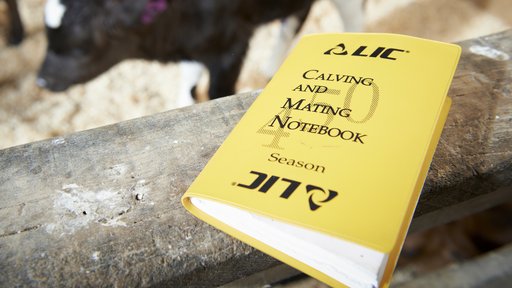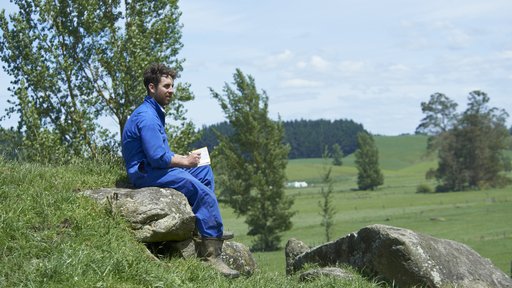Reproduction and the indexes
For more information on this article, or other herd reproduction topics, talk to your local LIC Agri Manager
or, email the Reproduction team at [email protected].
To help answer these questions, we looked at the reproductive performance of nearly 2.5 million cows in New Zealand and compared it with three industry indexes: Breeding Worth (BW), Production Worth (PW) and Lactation Worth (LW).
The data
To assess the relationship between reproductive performance and the three indexes, we used the 4671 herds that were able to produce a Detailed DairyNZ Fertility Focus Report1 for the Spring 2021 mating (the same herds that were used for the national reproduction statistics). For BW, cows were divided into quartiles based on BW within each herd, and labelled as a top, second, third or bottom quartile cow. Cows in the top quartile had the highest BW. This process was repeated independently for both PW and LW as well.
For each index, cows were grouped together in their respective quartiles and four key reproduction measures were analysed for that quartile: 6-week in-calf rate, 3-week submission rate, conception rate and not-in-calf rate. To calculate these measures for each quartile, things like mating and pregnancy dates for each cow were standardised2.
Results
Breeding Worth (BW)
The results in the table below show us that 6-week in-calf rate increases as BW increases. Based on these results, the indications are that, in general, high BW animals do get in-calf well.
This means that when making culling and/or breeding decisions, selecting cows on BW will likely help to improve the reproductive performance of your herd. It is important to remember though that no matter how high a cow’s BW is, if she is not managed well enough to cater for her needs, she will not get in-calf well – good herd management is key to good herd reproductive performance.
|
National 2022 within herd ranking - BW |
Number of cows |
6 week in-calf rate |
3 week submission rate |
Conception rate |
Not in-calf rate |
|---|---|---|---|---|---|
|
Top Quartile |
Number of cows 620,539 |
6 week in-calf rate 68.2 |
3 week submission rate 81.2 |
Conception rate 52.1 |
Not in-calf rate 14.6 |
|
2nd Quartile |
Number of cows 622,894 |
6 week in-calf rate 66.8 |
3 week submission rate 78.0 |
Conception rate 52.3 |
Not in-calf rate 15.9 |
|
3rd Quartile |
Number of cows 621,785 |
6 week in-calf rate 64.8 |
3 week submission rate 75.4 |
Conception rate 51.6 |
Not in-calf rate 17.7 |
|
Bottom Quartile |
Number of cows 619,368 |
6 week in-calf rate 61.3 |
3 week submission rate 71.9 |
Conception rate 49.8 |
Not in-calf rate 21.1 |
Production Worth (PW)
The results in the table below show that there is little difference in reproductive performance between the four quartiles of PW - there’s less than 1% difference in 6-week in-calf rate between them. The top quartile cows do not have the highest 6-week in-calf rate, but they are still better than those in the bottom quartile, and have as low not-in-calf rate as any other quartile.
|
National 2022 within herd ranking - PW |
Number of cows |
6 week in-calf rate |
3 week submission rate |
Conception rate |
Not in-calf rate |
|---|---|---|---|---|---|
|
Top Quartile |
Number of cows 620,559 |
6 week in-calf rate 64.6 |
3 week submission rate 77.0 |
Conception rate 50.1 |
Not in-calf rate 16.8 |
|
2nd Quartile |
Number of cows 622,930 |
6 week in-calf rate 65.8 |
3 week submission rate 77.0 |
Conception rate 51.7 |
Not in-calf rate 16.7 |
|
3rd Quartile |
Number of cows 621,707 |
6 week in-calf rate 65.7 |
3 week submission rate 76.6 |
Conception rate 52.1 |
Not in-calf rate 17.2 |
|
Bottom Quartile |
Number of cows 619,369 |
6 week in-calf rate 65.0 |
3 week submission rate 75.9 |
Conception rate 52.1 |
Not in-calf rate 18.4 |
Lactation Worth (LW)
The results in the table below follow the same pattern as the PW results. However, we can see that cows in the bottom quartile for LW have a noticeably lower 6-week in-calf rate than the other quartiles.
Based on these results, the indications are that, in general, high producing cows (represented here as high PW or high LW cows) get in-calf as well as any other cow. This means that selecting cows based on PW is likely to have little impact on your herd’s reproductive performance, and that culling low LW cows may help to improve herd reproductive performance.
|
National 2022 within herd ranking -LW |
Number of cows |
6 week in-calf rate |
3 week submission rate |
Conception rate |
Not in-calf rate |
|---|---|---|---|---|---|
|
Top Quartile |
Number of cows 536,770 |
6 week in-calf rate 65.6 |
3 week submission rate 78.2 |
Conception rate 50.2 |
Not in-calf rate 15.4 |
|
2nd Quartile |
Number of cows 538,953 |
6 week in-calf rate 67.1 |
3 week submission rate 78.0 |
Conception rate 52.0 |
Not in-calf rate 14.9 |
|
3rd Quartile |
Number of cows 537,883 |
6 week in-calf rate 67.2 |
3 week submission rate 77.5 |
Conception rate 52.7 |
Not in-calf rate 15.2 |
|
Bottom Quartile |
Number of cows 535,680 |
6 week in-calf rate 65.2 |
3 week submission rate 76.0 |
Conception rate 51.9 |
Not in-calf rate 18.3 |
Summary
The results indicate that making culling/breeding decisions based on these three indexes are unlikely to negatively impact your herd’s reproductive performance. In fact, in the case of BW and LW, selecting for high BW cows and against low LW cows may help to improve your herd’s reproductive performance. They also indicate that you don’t have to choose between high milk production and good herd reproductive performance, as you can have both.
As mentioned earlier though, no matter what cows you have in your herd, the key to good herd reproductive performance is good herd management. You can find more information on herd management for reproductive performance on the LIC Reproduction page and the DairyNZ Reproduction and mating page.
- A Detailed DairyNZ Fertility Focus Report is the highest level of this report you can get, and means that the data available for analysis is as accurate as possible.
- For each cow, her mating dates etc. were standardised by calculating how many days into mating that event occurred in relation to her herds mating start date (reported as ‘day of mating’). E.g. a cow in a herd with a mating start date of the 1st of October, who was mated on the 5th of October, has a ‘day of mating’ of 5 for that mating. The “day of mating” that events occurred was then used to calculate the 4 reproduction measures for each PW quartile e.g. the 3 week submission rate of the Top quartile cows = the percent Top quartile cows that had a mating whose “day of mating” was 21 or less.
Disclaimer: The reproduction measures analysed were calculated from data and information entered by herd owners and collected by LIC & DairyNZ. Accuracy of the results reported here is subject to the accuracy of the data entered.
Reproduction and the indexes
For more information on this article, or other herd reproduction topics, talk to your local LIC Agri Manager
or, email the Reproduction team at [email protected].




